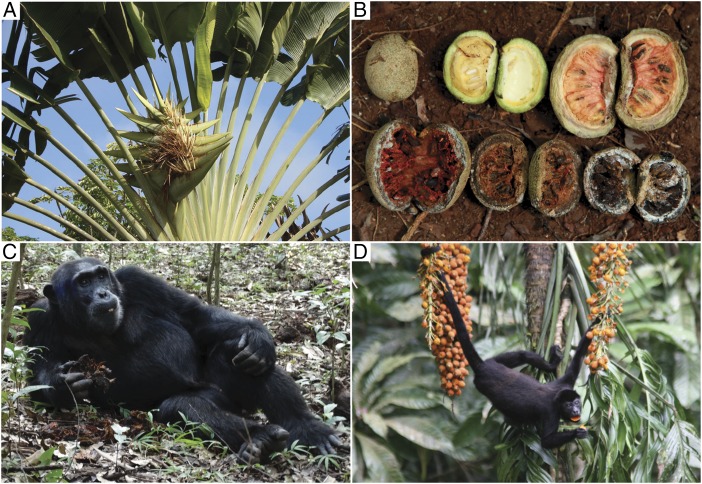Fig. 2.
(A) Inflorescense of Ravenala madagascariensis. The large bracts contain pooled, possibly fermented, nectar. Image courtesy of Rolf P. Kudritzki (University of Hawaii at Manoa, Honolulu, HI). (B) Ground-sourced fruits exhibit a range of developmental stages; here the fruits of Stemmadenia donnell-smithii (Apocynaceae) illustrate decomposition. For African apes, overripe fruits could have a calorically optimal combination of sugar and ethanol. Image courtesy of Jim Marden (Pennsylvania State University, University Park, PA). (C) A recumbent chimpanzee (Pan troglodytes) consumes the fermented fruit of an undetermined species in Kibale National Park, Uganda (image courtesy of Mike Knoche). (D) A mantled howling monkey (Alouatta palliata) consumes the fruit of Astrocaryum standleyanum (Arecaceae), a species in which ripe fruit can have an ethanol content ranging from 0.52 to 0.61% (25) (image courtesy of Greg Willis).

